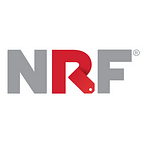Innovation is not a side project
NRF’s Artemis Berry talks with theBoardlist’s Sukhinder Singh Cassidy on the people, culture and decisions that drive true innovation.
Driving innovation isn’t exactly one of those things you can check off a to-do list on any given day. Again and again, we hear that companies have to prioritize innovation, infuse it into their culture and bring in diverse perspectives. For retailers facing an increasingly demanding consumer and an industry undergoing transformation, the question isn’t just how to innovate in one area, but how to drive it across the organization. It’s the central theme of the upcoming NRFtech in San Diego, where retail technology, marketing and digital executives will gather July 23–25.
Prior to her appearance at NRFtech, we spoke with Sukhinder Singh Cassidy, founder and chairman of video shopping site Joyus and founder of theBoardlist, an organization that aims to put more women on boards, about how to be innovative as an organization, close the gender gap and realize your vision.
Retailers are talking a lot about creating a culture of innovation. What can you share with them about creating the right culture based on your own experience in the organizations you’ve been a part of?
Cultures of innovation start with the premise that innovation and learning to iterate fast are everyone’s responsibility and job, not sitting in a silo independent of the rest of the organization. Creating the right culture is about creating the expectation that innovation is a part of every person’s core job, rather than a “side project.”
Innovation is a mandate in most retail companies today, but being truly innovative can mean taking big risks. From a leadership perspective, how do you approach risky decisions?
Approaching risky decisions is about breaking big risks into smaller ones, and getting information by taking each smaller step that helps minimize the overall risk of a project. The more “risky” a project, the more it needs to be broken down into smaller digestible risks that allow you to commit progressively up until the point where you need to take the big step — and that step is informed by what went ahead of it.
This is the ideal, although sometimes companies wait too long to take action, or the market changes more rapidly and they are forced to consume the biggest risk in one fell swoop, which obviously is inherently “more risky” itself.
What’s the best way to sell someone on a big idea? What do you do, or how does your team sell a big idea to you?
The best way for someone to sell a big idea is a) simply with a crisp articulation that can be sold in a sentence; b) deeply, backed by data on market size/opportunity; and c) broken down into steps and stages that make it clear the series of things you need to believe to capture the full-scale opportunity.
Your work on theBoardlist highlights the importance of getting more women on the boards of tech companies. What are some things leaders of any company can do today to help close the gender gap within their own organizations or industries?
The biggest opportunity for leaders of any company is to understand the barriers to women at the top, middle and entry points of their organization and have a plan to attack all three levels, but specifically mid-level women leaders. By far the biggest issue I see in this space is the “drop off” of women, at mid stages in their career, who are high-potential C-suite candidates but exit before their potential may be fully realized.
Losing women mid-cycle in their careers diminishes the value of building diversity in entry-level roles if there is not a clear path for women to scale to leadership positions that accommodates their concerns/issues/barriers mid-career.
What people, companies or brands inspire you? What makes them inspiring?
At the macro level, I am inspired by people who have “level 5” leadership qualities (according to Jim Collins’ “Good to Great”) — meaning they are servant leaders with a balance of deep confidence and deep humility. They radiate optimism but also authenticity and candor, and help bring out the best in people. I admire this style of leadership deeply.
You’ve made some big moves in your career. How do you know when it’s time to move on to something new?
Historically, I know it’s time to move on from something when I feel like I’m not learning or progressing and am getting too comfortable in a role. When I don’t feel stretched or out of my depth, I have learned it’s time to make a change.
Learn more about NRFtech:
Highlights from NRFtech 2016:
